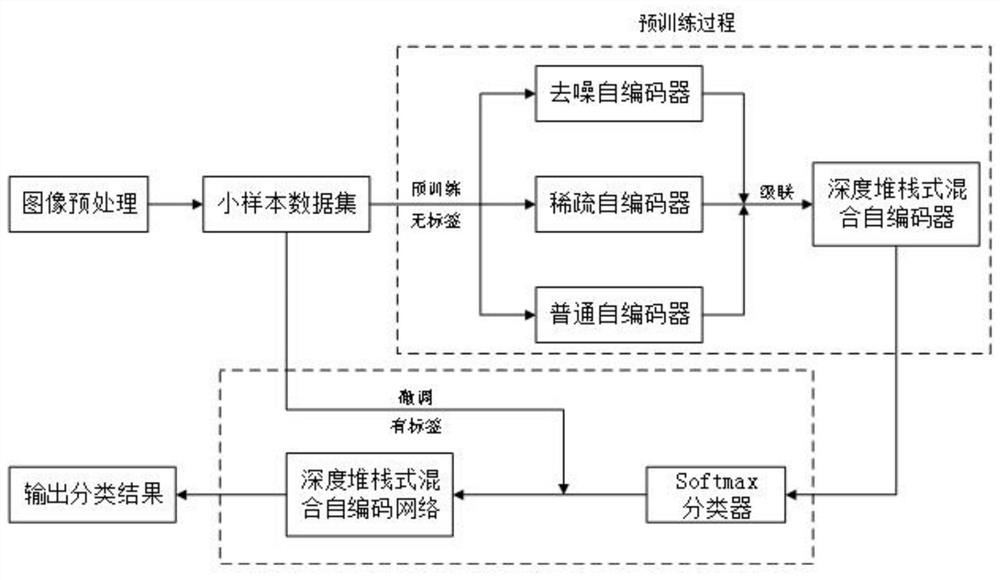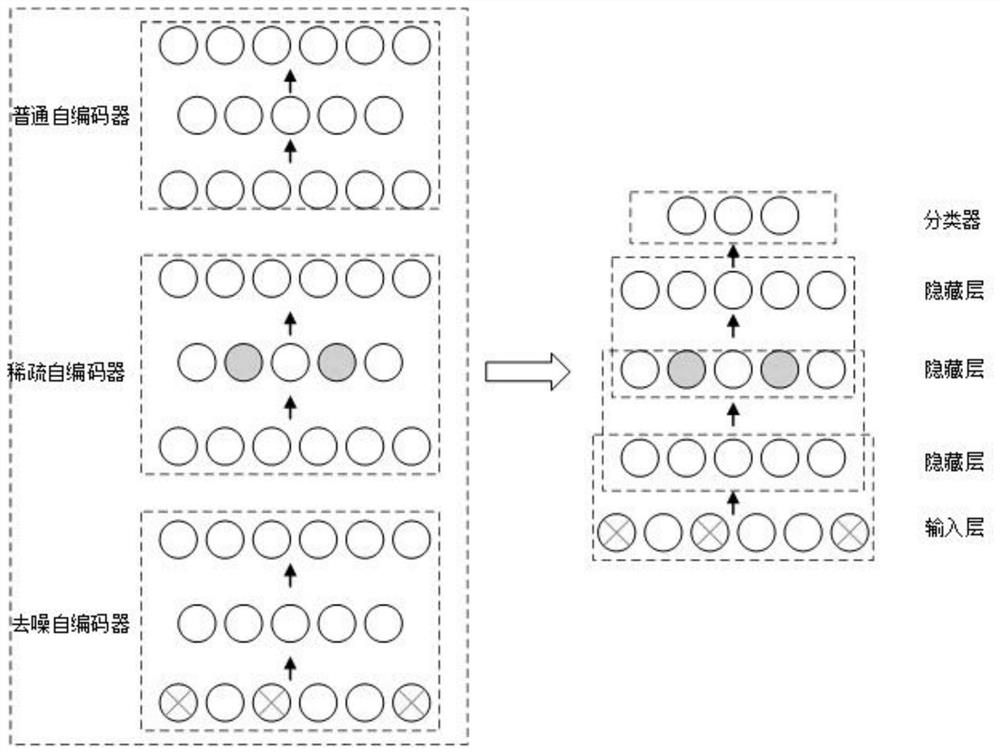Small sample photovoltaic hot spot identification method based on deep stack type hybrid self-encoding network
A technology of self-encoding network and recognition method, which is applied in the field of small-sample photovoltaic hot spot recognition based on deep stacked hybrid self-encoding network, which can solve the problems of unbalanced sample set, strong generalization ability, and inability to directly use classification neural network. , to achieve powerful feature extraction and expression capabilities, strong function representation and approximation capabilities, enhanced robustness and generalization capabilities
- Summary
- Abstract
- Description
- Claims
- Application Information
AI Technical Summary
Problems solved by technology
Method used
Image
Examples
Embodiment
[0028] Example: such as figure 1 , figure 2 As shown, a small-sample photovoltaic hotspot recognition method based on a deep stacked hybrid autoencoder network of the present invention includes the following steps;
[0029] Step 1. Perform image preprocessing on the collected photovoltaic infrared images to obtain a small sample hot spot image dataset;
[0030] Step 2. First, pre-train the DAE with an unlabeled small-sample hotspot image dataset. When the reconstruction error of the input and output is the smallest, it indicates that the training is completed, and the image features extracted by the hidden layer are retained;
[0031] Step 3. Use the image features extracted by the DAE hidden layer as the input of SAE. After the pre-training is completed, use the low-dimensional abstract features obtained by SAE as the input and then train an AE ordinary autoencoder;
[0032] Step 4. Concatenate the pre-trained DAE, SAE and AE and add a Softmax classifier to form a deep sta...
PUM
 Login to View More
Login to View More Abstract
Description
Claims
Application Information
 Login to View More
Login to View More - R&D
- Intellectual Property
- Life Sciences
- Materials
- Tech Scout
- Unparalleled Data Quality
- Higher Quality Content
- 60% Fewer Hallucinations
Browse by: Latest US Patents, China's latest patents, Technical Efficacy Thesaurus, Application Domain, Technology Topic, Popular Technical Reports.
© 2025 PatSnap. All rights reserved.Legal|Privacy policy|Modern Slavery Act Transparency Statement|Sitemap|About US| Contact US: help@patsnap.com


